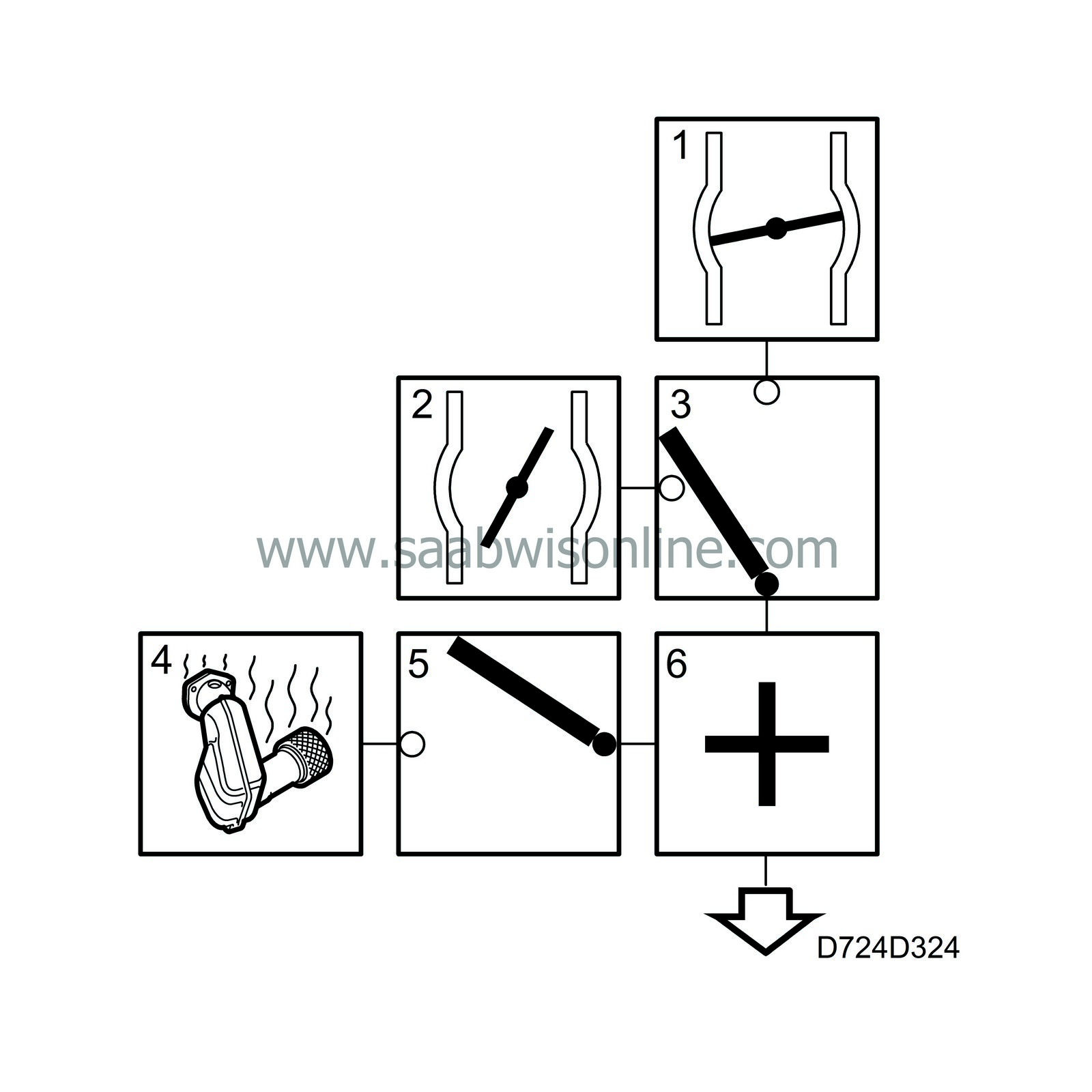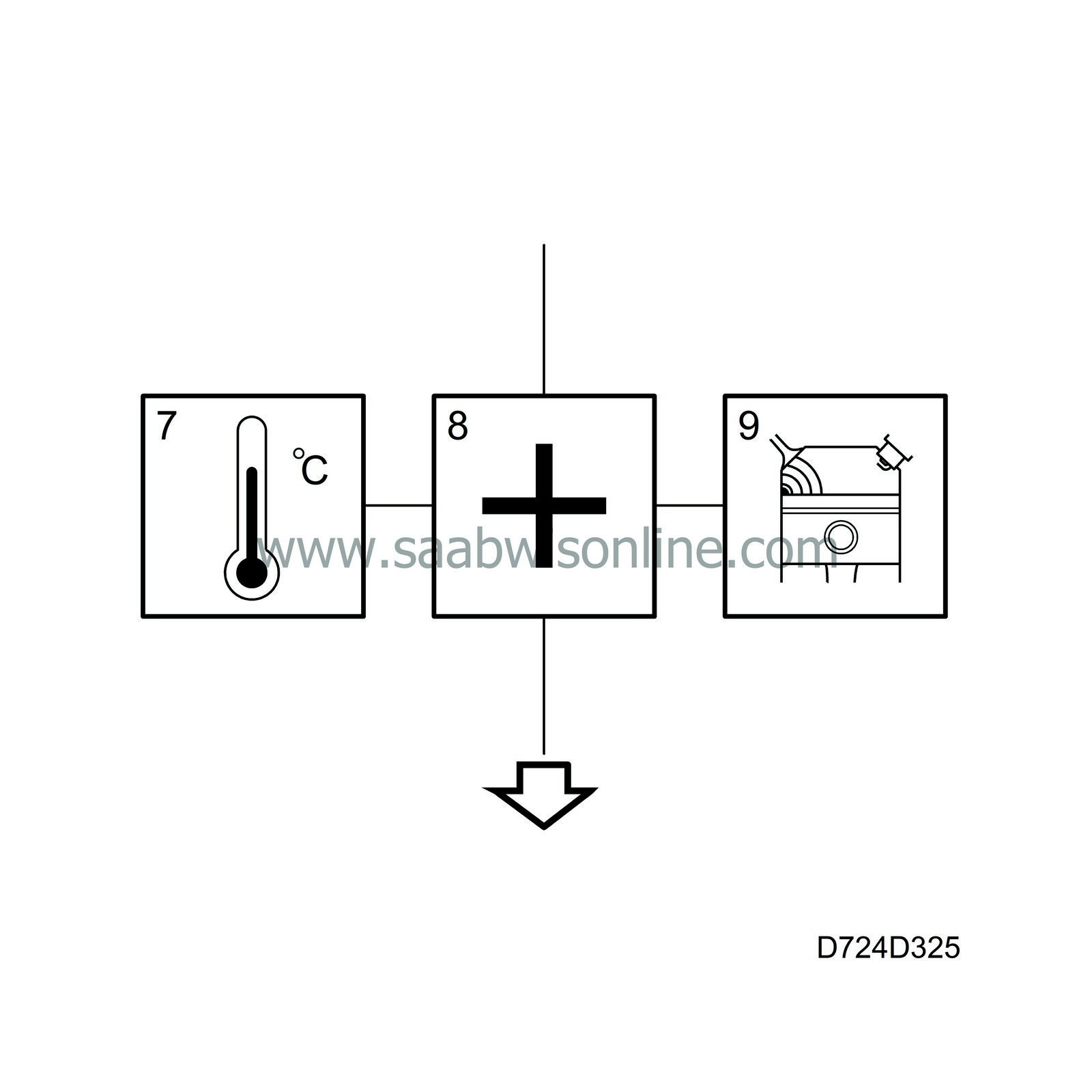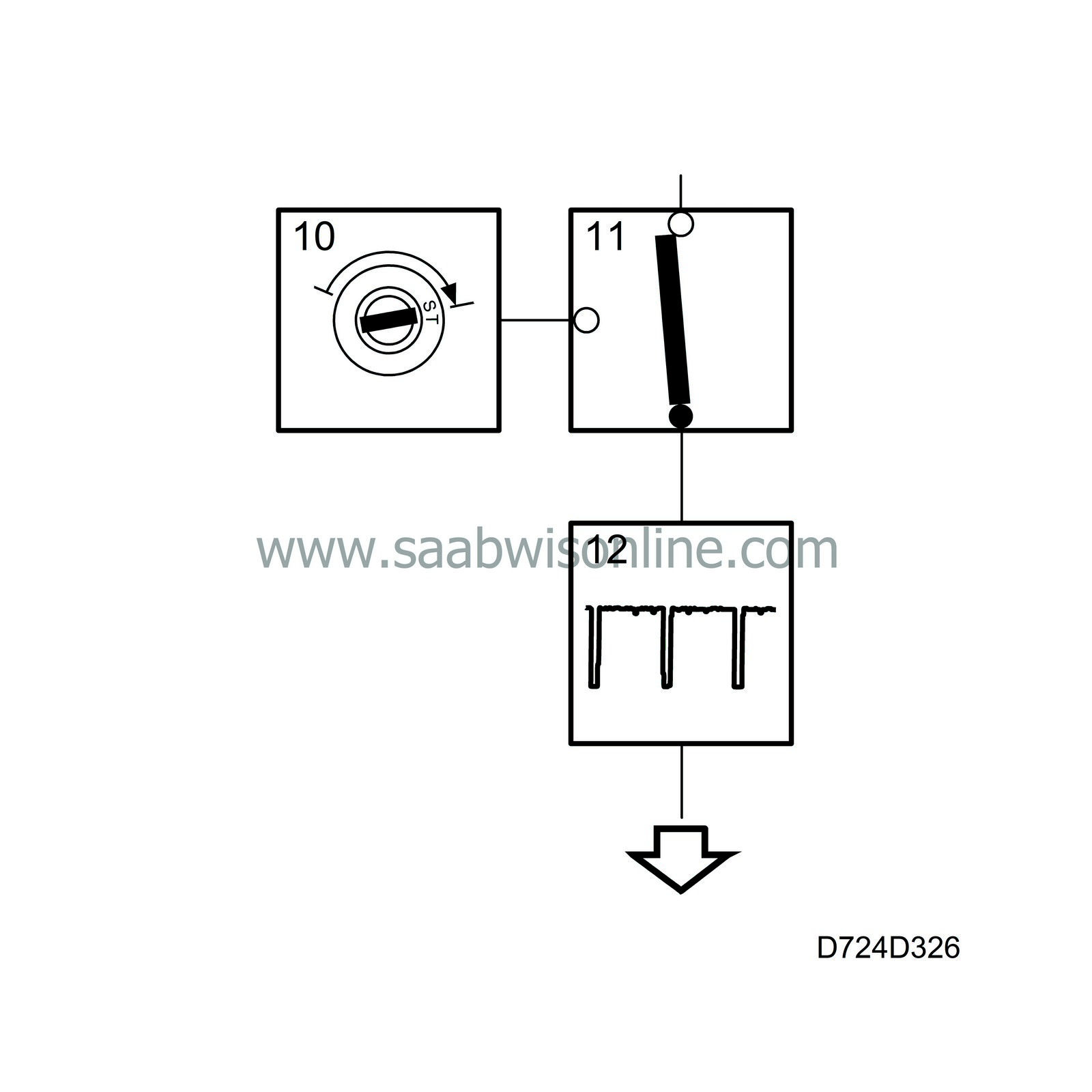Ignition, basic function
| Ignition, basic function |
| 1. |
Idling speed ignition timing
With idle speed control active, the timing is adjusted to stabilize the idling speed. The value is sent to box 3. 
|
|
| 2. |
Normal ignition timing
When idle speed control is inactive, the ignition timing is read from a load and engine speed dependent matrix. The value from the matrix is optimized for the lowest fuel consumption (best engine torque). The value is sent to box 3. |
|
| 3. |
Selection of ignition timing
One of the ignition timing calculations is selected depending on which function is active. The value is sent to box 6. |
|
| 4. |
Catalytic converter heating ignition
In order to heat the catalytic converter as quickly as possible after starting, the ignition will be retarded. This is a compensation matrix that is added to the value from box 3. The matrix is dependent on load and engine speed. |
|
| 5. |
Engaging catalytic converter heating ignition
The function is active when the coolant temperature is above -10°C but below +64°C. |
|
| 6. |
Total
The value from box 5 is added to the value from box 3. |
|
| 7. |
Compensation
The ignition timing is corrected depending on the engine coolant temperature and intake air temperature. The value is sent to box 6. 
|
|
| 8. |
Knock control
If knocking occurs, a timing retardation will be calculated. The value is sent to box 6. |
|
| 9. |
Total
The compensation angle and knock retardation are totalled to give the current ignition timing. The value is sent to box 7. |
|
| 10. |
Selection of ignition timing
Starting ignition timing is selected when the engine has not yet been started. The value is sent to box 9. 
|
|
| 11. |
Starting ignition timing
The starting ignition timing is calculated depending on the intake air temperature and the coolant temperature. The value is sent to box 9 via box 7. |
|
| 12. |
Activate relevant trigger
At the calculated crankshaft angle, the microprocessor controls the transistor for the trigger that is next in the firing order. |
|


